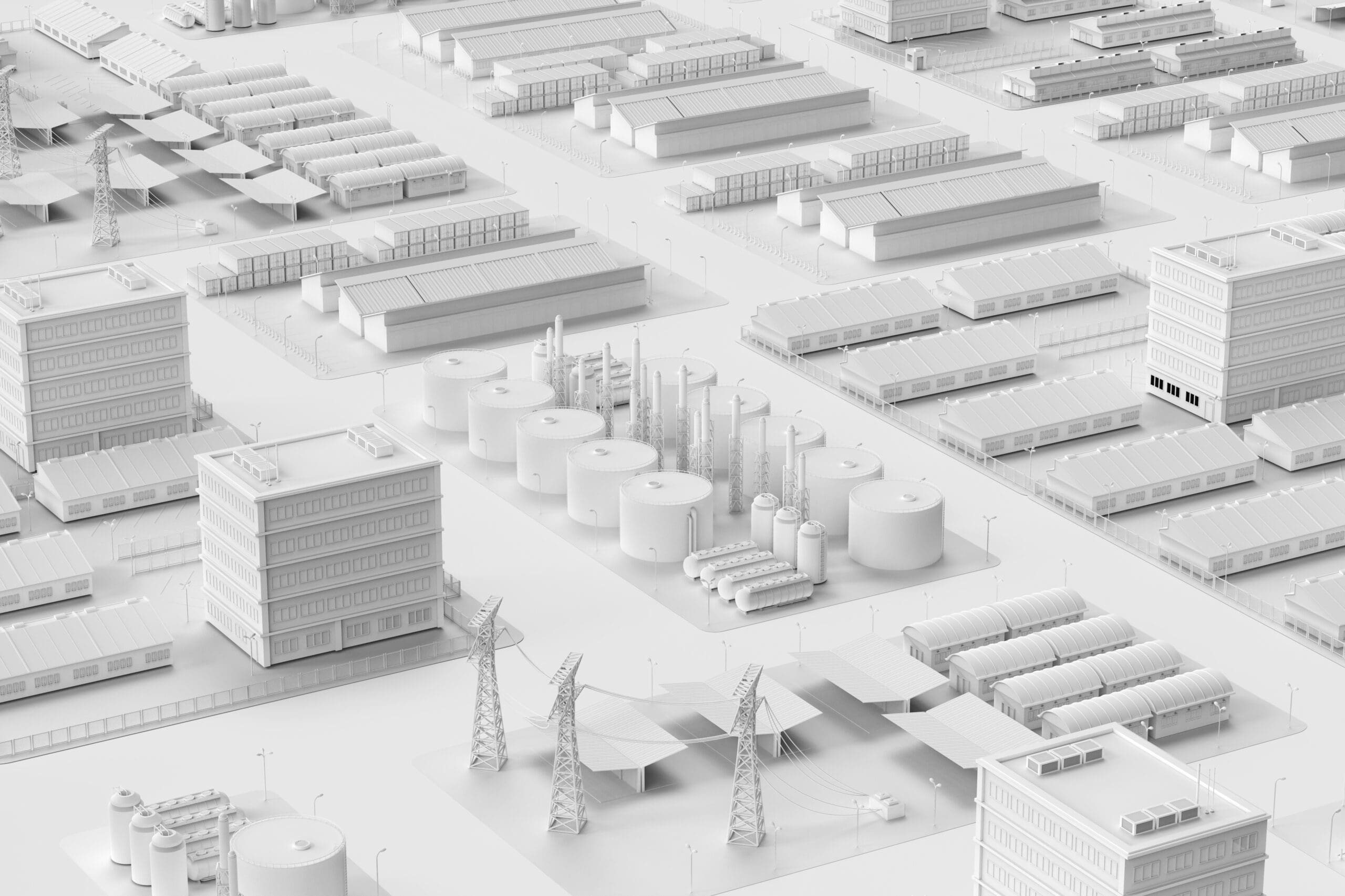Gas leak surveys are critical for ensuring public safety and maintaining regulatory compliance, especially in light of aging infrastructure and evolving federal requirements. Yet, traditional processes make it difficult to perform this work efficiently and effectively. As leading utilities have discovered, a map-centric mobile workforce management solution can revolutionize gas leak surveys, improving efficiency while ensuring safety and compliance.
New Requirements Create Greater Pressure
As US energy production reaches record levels, the gas utility distribution network is challenged to keep up with surging demand. Yet, this critical infrastructure is aging (much of it dating back 80+ years) and susceptible to leaks that are potentially dangerous and can result in lost revenue. From 2004–2023, 12,721 reported pipeline incidents caused 270 fatalities, over a thousand injuries, and more than $11 million in costs.
The passage of the 2020 PIPES Act and the creation of the Natural Gas Distribution Safety & Modernization Grant Program are moving utilities forward in improving the safety of high-risk legacy natural gas distribution infrastructure. To turn the congressional mandates of the PIPES Act into regulatory requirements, the Pipeline & Hazardous Materials Safety Administration (PHMSA) has proposed to amend federal pipeline requirements. These amendments aim to reduce methane and other emissions through more stringent leak survey requirements and performance standards for leak detection programs. The intent is to find and repair gas leaks before they cause ruptures or explosions, using the most advanced technology available. These proposed changes will also place greater pressure on gas utilities to improve how they track and trace gas utility assets in accordance with ASTM F2897, requiring more granularity in reporting on field asset condition.
Following Gas Pipeline Advisory Committee (GPAC) meetings on the proposed leak detection and repair rule (LDAR) in November 2023 and March 2024, PHMSA began reviewing and addressing committee recommendations and public comments received during the comment period. The comment period closed on April 29, 2024 for comments on GPAC proceedings related to the LDAR notice of proposed rulemaking and was extended to August 27, 2024 for comments on GPAC proceedings related to the class location notice of proposed rulemaking. As of November 2024, the ruling was not finalized. Regardless, gas utilities are taking proactive steps now to prepare for the eventual implementation of the final rule.
Traditional Leak Survey Methods Pose Limitations
Historically, conducting gas leak surveys has relied on manual and paper-based processes that create a host of challenges. Data required for performing and recording this work is often scattered across multiple disparate systems, complicating management and compromising accuracy and reliability. At the same time, the sheer volume of data hinders system performance.
Traditional gas leak survey processes also make the work of field crews and operations staff more difficult and inefficient. Field teams often lack the map-centric view needed to accurately determine the location of the assets they must inspect, and they’re forced to use cumbersome, error-prone manual data collection processes. Operations staff rarely have real-time data visibility or timely reporting on this important work. Without a clear, accurate picture of the work required and its current status, they struggle to manage and optimize their finite field resources.
As gas utilities work to ensure their field infrastructure is safe and reliable, they are replacing this inefficient approach with digitized solutions for managing field assets. The nation’s leading utilities are investing in mobile workforce management solutions that automate field processes like gas leak surveys, applying intelligent workflow and a map-centric approach to transform field work. Using geospatial solutions like EpochField, they are modernizing leak survey processes to improve efficiency, compliance, resource planning, and safety.
Contact an Epoch Sales Consultant today ⟶
Mobile Workforce Management Can Transform Gas Leak Surveys
Replacing manual field workforce management processes with a digitized, automated solution can revolutionize how gas utilities conduct leak surveys in compliance with the newest regulatory requirements. This approach yields several invaluable benefits.
- Improved Accuracy. A mobile workforce management solution equips field crews to collect and validate data efficiently in real time, improving data integrity and reliability. More accurate data translates to better situational awareness, improving their safety and efficiency. A mobile workforce management system also provides standardized workflows and checklists that further improve accuracy.
- Better Efficiency. A digitized solution like EpochField enables operations staff to plan the optimal route for field crews and allocate resources efficiently. By eliminating manual data entry and paperwork, a workforce management solution avoids wasted steps and streamlines communication between the field and the office.
- Greater Insights. Advanced workforce management solutions like EpochField turn field asset data into powerful insights that help utilities make informed operational decisions. The platform serves as a central hub for managing and analyzing field data, integrating information from third-party asset management, GIS, and other back-office systems for a complete picture. The system’s reporting and data visualization capabilities also make data usable and actionable.
- Enhanced Compliance. As regulations around leak surveys become more stringent, gas utilities can leverage a workforce management solution like EpochField to streamline compliance. A digitized solution automates recordkeeping—reducing manual work while simplifying reporting and providing a more auditable documentation trail. The platform also enables operations staff to proactively schedule gas leak surveys and maintenance in compliance with requirements.
Best Practices for a Smoother Digitized Solution Implementation
For gas utilities that are ready to replace inefficient manual workforce management processes with a digitized, automated approach, several best practices will ensure a successful implementation.
- Assess your current workforce management processes and identify pain points and inefficiencies across your field operations, including the gas leak survey process.
- Use this assessment to guide your selection of the technology solution and partner that is best suited to solve your specific field workforce management challenges.
- Develop a comprehensive plan that includes hands-on training for all affected employees and change management strategies that build buy-in and ensure adoption.
- Monitor the implementation to assess performance and identify opportunities to continually improve and fine-tune your processes for better outcomes.
How a Major Gas Utility Revolutionized the Gas Leak Survey Process
One of the nation’s largest utilities adopted this very approach when it replaced its manual leak survey process with a fully automated system using the EpochField workforce management solution. The utility serves more than 21 million customers across a 20,000-square-mile territory, handling 5% of all US gas deliveries through over 101,000 miles of distribution pipeline. As the organization prepared to comply with more rigorous gas leak survey requirements, it struggled with a massive volume of data residing across many different applications, some of it inaccurate and unreliable.
To meet these challenges, the utility implemented the EpochField geospatial solution to improve workforce management and enhance the efficiency of its field crews’ work tasks, including gas leak surveys. This highly scalable, cloud-based solution could handle the utility’s massive volume of GIS data, including all the information required to conduct pipeline leakage surveys accurately and efficiently. In conjunction with implementing EpochField, the utility added a more rigorous data validation process to identify and resolve data inaccuracies. And by engaging key stakeholders early, it gained crucial buy-in and valuable input as it redesigned operational procedures and workflow to support the new leak survey process.
Field crews now use the EpochField mobile app on tablets to capture and upload leak survey data directly to the platform’s web-based portal, centralizing data aggregation and analysis. This real-time visibility enables operations teams to monitor work orders and project status from a central dashboard, allowing for more efficient task management and faster, data-driven decision-making.
The utility’s field employees use the EpochField mobile app on their iPads to capture and upload leak survey data to the platform’s web-based portal, which serves as a central hub for data aggregation and analysis. This streamlined process empowers operations teams to monitor work orders and project completion status using a real-time dashboard, enabling more efficient task management and faster, data-driven decisions.
As utilities embrace all the opportunities of digital transformation, many are adopting digitized mobile workforce management solutions like EpochField. This industry-leading platform empowers utilities to conduct safer, more efficient, data-driven gas leak surveys and overall asset management, enhancing public safety and operational performance.
To learn how EpochField can revolutionize your gas leak survey process and other field tasks, contact an Epoch sales consultant or visit EpochField.
Revolutionizing Gas Leak Surveys
The PIPES Act and PHMSA’s LDAR proposal demand more frequent, accurate leak surveys and stricter performance standards.
Manual gas leak survey processes scatter critical data across systems, reduce visibility, and delay detection and repair of dangerous leaks.
Workforce management platforms like EpochField automate workflows, streamline routing, validate data in real-time, and enable instant reporting for faster decisions.
Conduct workflow assessments, choose a scalable solution, train teams effectively, and monitor adoption for continuous improvement.
When one of the nation’s largest utilities replaced its manual leak survey process with a fully automated system using EpochField, they gained improved data accuracy, streamlined inspections, centralized reporting, and real-time dashboard visibility across a 101,000-mile pipeline network.





